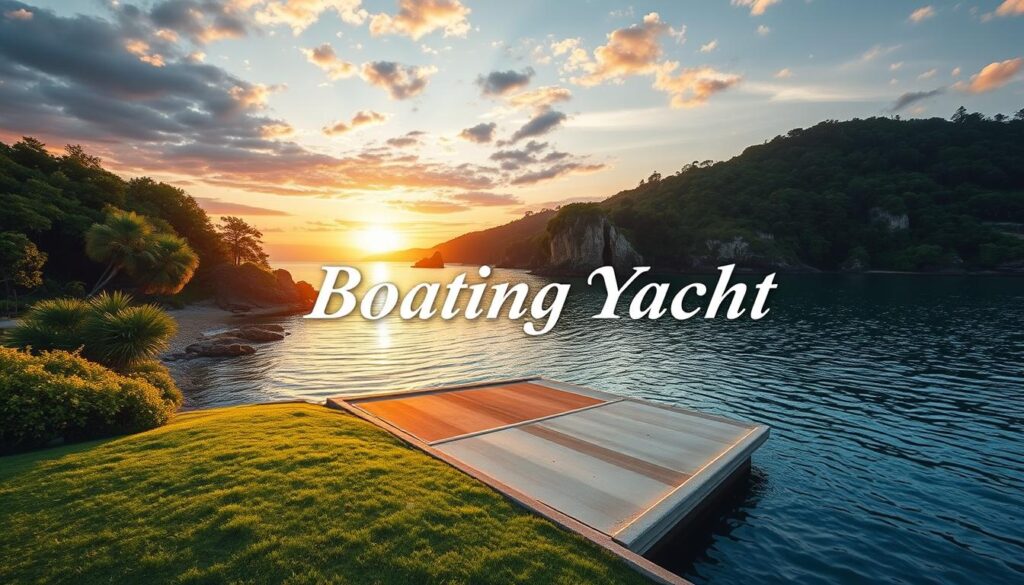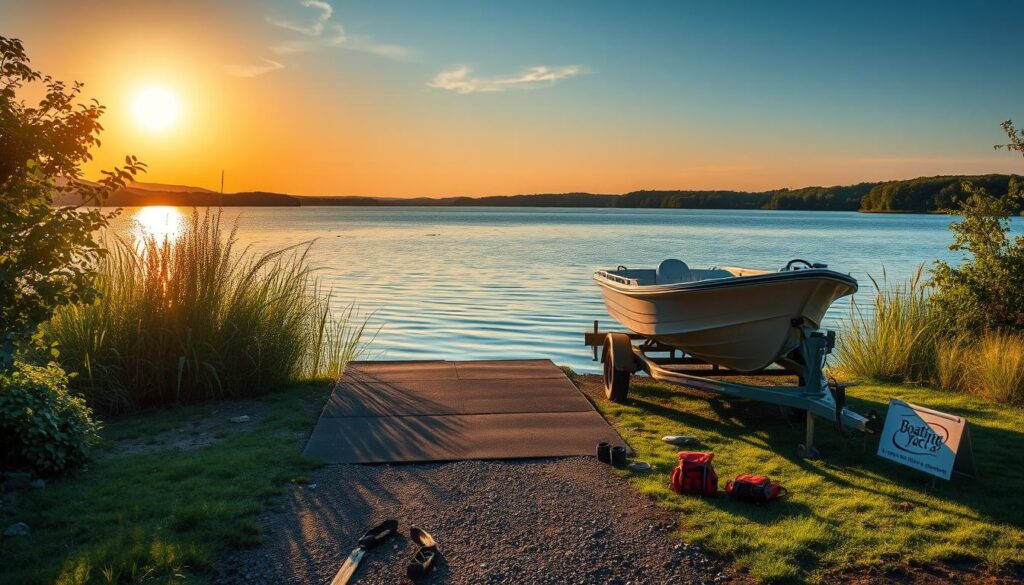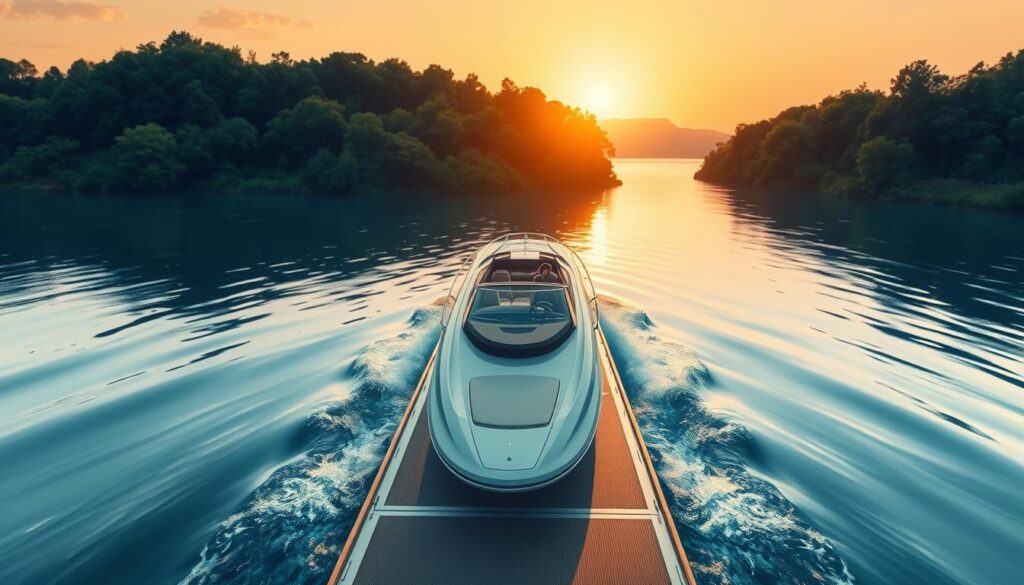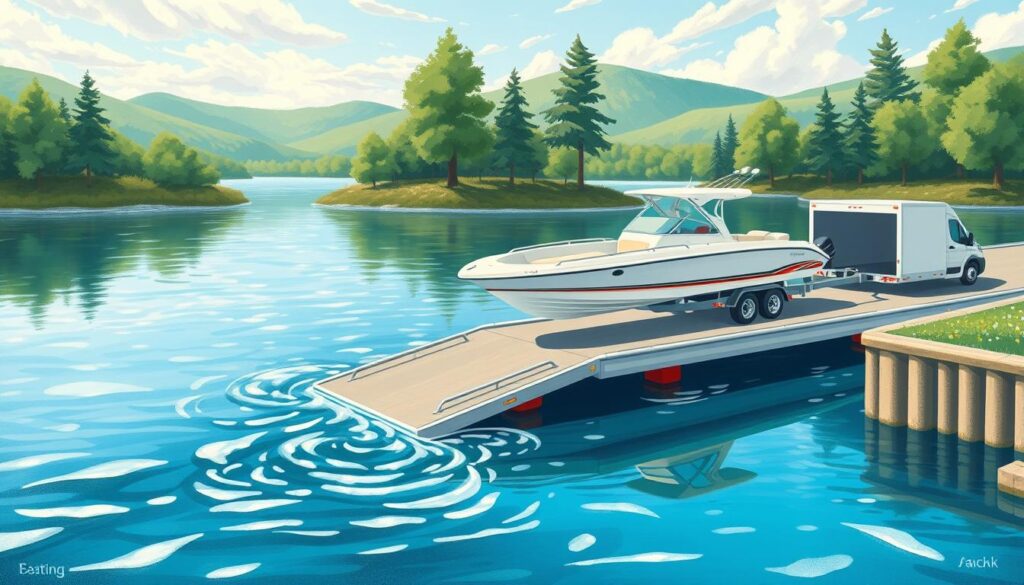Is your boat ready to hit the water? However, you need help locating the correct boat ramp to release your adventure. With such many options, deciding on the proper marine right of entry to the point can be daunting. Imagine effortlessly navigating to a nicely maintained release website that caters to your unique desires, ensuring you enjoy smooth and fun boating from start to finish.
Enter Wavve Boating, the closing app designed to simplify your search for the right boat ramp. With a close to 5-star rating within the app save, heaps of critiques, and hundreds of hundreds of downloads, Wavve Boating is the go-to aid for boating enthusiasts. This revolutionary app offers a complete boat launch map with intuitive capabilities and a consumer-friendly interface, making it effortless to pick out an appropriate spot for your watercraft access.
Wavve Boating goes past the list of boat ramps; it provides precious insights from fellow boaters who share their reviews via likes and dislikes for each ramp. This function allows you to make knowledgeable choices and pick out the exceptional-acceptable marina centres on your desires. Additionally, the app offers complete navigation alternatives to help you, without problems, locate the closest coastline access point, with help from GPS, flip-by-means-of-turn instructions, direction planning, and targeted information on distances.
With boat ramp locations continuously tested by using fellow boaters and the committed Wavve team, you can believe the accuracy and reliability of the facts supplied. Whether you’re a seasoned boater or new to the vessel launch arena, Wavve Boating is your remaining accomplice for coming across the appropriate boat ramp. Say goodbye to the strain of trying to find suitable boating infrastructure, and have a good day in a world of journey with Wavve Boating.
Ready to elevate your boating experience? Visit BoatingYacht.Com to learn more about how Wavve Boating can transform the way you approach your subsequent watercraft tour.
Table of Contents
Key Takeaways
- Wavve Boating app simplifies the search for the perfect boat ramp with its comprehensive launch map and user-friendly interface.
- Fellow boaters provide valuable insights through likes and dislikes for each ramp, enabling informed decision-making.
- The app offers comprehensive navigation options, including GPS support, turn-by-turn directions, and detailed distance information.
- Boat ramp locations are continuously verified by the Wavve team and fellow boaters, ensuring accuracy and reliability.
- Wavve Boating caters to both seasoned boaters and newcomers, transforming the way you approach your next watercraft adventure.
Understanding the Basics of Boat Ramps
Before you start your boating adventure, it’s vital to recognize boat ramps. A boat ramp lets boaters get their boats inside and out of the water. They are critical for getting to waterways and making the easy transition from land to water.
What is a Boat Ramp?
A boat ramp, additionally known as a launch ramp or boat launch, is a sloped region that goes from the shore into the water. It makes it clean for boaters to put their boats in and take them out. These ramps are constructed to last using substances like concrete, gravel, or asphalt and might withstand the weight of boats and trailers.
Types of Boat Ramps
There are many sorts of boat ramps with personal blessings and downsides. Here are a few not-unusual ones:
- Concrete ramps: These are the most long-lasting and stable, offering brilliant traction and resisting erosion well. However, they cost the most to construct.
- Gravel ramps: Gravel ramps are cheaper than concrete ramps. They have exact traction, but they need extra maintenance to stay smooth.
- Natural surface ramps: Made from compacted earth or sand, these ramps are the cheapest. However, they can erode and become slippery when moist.
- Floating docks: Floating docks are great for launching and retrieving boats, especially where water stages trade loads. They’re flexible and can suit extraordinary boat sizes.
There are also unique ramps for specific situations, such as low-water ramps for shallow regions and excessive-water ramps for places with significant water degree adjustments.
Importance of Choosing the Right Boat Ramp
Picking the right boat ramp is fundamental for a safe and fun boating experience. Think about those elements when selecting a ramp:
| Factor | Importance |
|---|---|
| Water depth | Make sure the ramp goes far enough into the water for your boat, even at low tide or water levels. |
| Ramp condition | A well-kept ramp with a smooth surface is crucial for safe launching and retrieving. Avoid ramps with big cracks, potholes, or erosion. |
| Accessibility | Choose a ramp that’s easy to get to by road and has enough parking for your vehicle and trailer. |
| Traffic | Busy boat ramps can get crowded during peak times, causing delays and safety issues. Consider the ramp’s popularity and plan your visit accordingly. |
“Proper boat ramp etiquette means using designated parking spots to keep things orderly and make retrieval easier.”
– SourceBy understanding the basics of boat ramps and picking the right one, you could have an easy and amusing boating experience. This way, you may keep away from dangers and demanding situations.
Factors to Consider When Selecting a Boat Ramp

Choosing the right boat ramp is critical to a brilliant boating journey. Consider several essential factors to find a ramp that suits your desires. Doing your homework earlier than you pass can prevent time and pressure.
Location and Accessibility
The ramp’s vicinity could be very important for a smooth trip. Think about how many miles it is from your property or where you’re staying. Also, consider whether it is easy to get to from essential roads.
Look for dangers around the ramp, like sturdy currents or shallow water. Smart boaters also consider launching downstream, which is less complicated and avoids risky currents.
Water Depth and Tides
Water depth and tides are critical when picking a ramp. Your boat wishes sufficient water to launch and retrieve competently. Tides can trade the water stage, so knowing the agenda is vital.
Ramps with deeper water and steady depths are higher. They provide greater flexibility and decrease the hazard of boat or trailer harm.
Ramp Condition and Maintenance
The ramp’s condition and upkeep are important for a good launch. Ramps crafted from robust substances like concrete, aluminium, or metallic are more secure and last longer. But even concrete needs daily sealing to stay in accurate form.
Wood ramps are cheaper, but they need some care to prevent rot and decay. Make sure the ramp’s slope is proper, between 12% and 15%, for safe launching and retrieving. Also, ramps can get slippery in warm climates, so be careful then.
| Boat Ramp Material | Pros | Cons |
|---|---|---|
| Concrete | Durable, long-lasting | Requires regular resealing, can be slippery |
| Aluminum | Strong, corrosion-resistant | More expensive than other materials |
| Wood | Less costly | Prone to rot, warping, and decay |
Parking and Amenities
While deciding on a ramp, consider parking and different amenities. Good trailer parking is essential for safe and smooth storage. Permeable pavers, like TRUEGRID, offer higher drainage and last a long time with little protection.
Look for ramps with restrooms, fish cleaning stations, and different features that meet your wishes. These extras could make your boating trip better.
“On average, renters can save 30-50% on boat storage costs, with over 25,000 locations available nationwide. By choosing the right storage option, boaters can save up to $1,200 per year while ensuring proper boat maintenance and prolonging the life of their vessel.”
– SourceYou can locate the best boat ramp by considering place, water intensity, preservation, parking, and services. Good studies and planning will make your boating ride smooth and fun from start to finish.
Preparing for Your Boat Ramp Adventure

Before you begin your boating ride, make sure you have everything you want. The proper equipment and an excellent checklist could make your day on the water high-quality. Avoiding problems begins with being organized.
Essential Equipment and Supplies
Here’s what you have to convey on your boat ride:
- Boat registration and coverage papers
- Personal flotation devices (PFDs) for every passenger
- Ropes and fenders for docking and mooring
- Dock lines for securing your boat
- Boat keys and spare keys
- Fuel and oil for your boat’s engine
- Anchor and anchor line
- Navigation lights and sound alerts
- First-useful resource package and emergency supplies
- Sun safety, which includes sunscreen, hats, and shades
Boating protection policies can vary depending on your boat and where you are boating. Always check nearby policies to make sure you have the proper gear.
Pre-Launch Checklist
Do an in-depth pre-launch checklist to avoid problems. A suitable tick list will let you launch quickly. Here’s a checklist to get you prepared:
- Inspect your boat for any damage or put on and tear
- Check the boat trailer for proper functioning and tyre pressure
- Ensure the drain plug is securely in the vicinity
- Check gasoline tiers and pinnacle off if vital
- Test the battery and electrical systems
- Load all essential tools and elements, including fishing rods or tow-toys
- Inspect lifejackets and throwable PFDs for correct condition and accessibility
- Check for invasive aquatic species on both the boat and trailer
- Prepare dock traces and fenders for easy entry to
- Ensure the boat registration and safety system are on board
| Preparation Step | Importance |
|---|---|
| Inspecting boat and trailer | Identifies potential issues before launching |
| Checking drain plug and fuel levels | Prevents water intrusion and ensures sufficient fuel for the trip |
| Testing electrical systems | Verifies proper functioning of navigation lights and other electronics |
| Loading gear and supplies | Ensures readiness for planned activities and emergencies |
| Inspecting safety equipment | Guarantees availability and functionality of lifesaving devices |
Spending time on guidance and using a checklist will make your boating journey safe and amusing. A bit of effort before you cross can save you plenty of trouble.
Mastering the Launch Process

Learning to release a boat easily is fundamental for a great boating day. Proper trailer function, following etiquette, and preserving safety first are essential. These steps help you release without pressure and enjoy it slow on the water.
Before hitting the ramp, ensure your boat and equipment are ready. Check the drain plug, safety gadget, battery, and fuel. A suitable prep avoids errors like forgetting the drain plug, which could fill your boat with water.
“Proper alignment when backing down the ramp is crucial. Efficiencies in backing down, using tow ropes, and launching the boat determine the smoothness of the process.”
– SourceLaunching your boat takes time and patience. Back down slowly and hold directly. If you are new, practice at some point in quiet times to build self-assurance. An empty lot with markers is superb for practising.
Good launching etiquette keeps the ramp safe and orderly. Be quick, communicate, and ease up. Don’t block the ramp when you launch, and keep conversations short. Always ask before tying up to every other boat. Turn off your headlights to avoid distracting others and keep everyone secure.
| Launch Process Steps | Description |
|---|---|
| 1. Align trailer | Position your boat trailer straight and centered on the ramp. |
| 2. Back down slowly | Carefully back your trailer into the water, maintaining control. |
| 3. Launch boat | Once the boat is floating, release it from the trailer and secure it. |
| 4. Move vehicle and trailer | Promptly move your vehicle and trailer away from the ramp area. |
A four-wheel-power automobile can make launching simpler, especially on steep or slippery ramps. It offers better control and traction, making launching safer and more confident.
Mastering the launch system, trailer positioning, etiquette, and protection lead to excellent boating adventures. Practice to get higher, and you’ll soon be launching like a pro.
Boat Ramp Best Practices

Complying with the right steps at boat ramps is key to having an easy and secure boating experience. Proper trailer alignment, unloading, and securing your boat are crucial. These steps help prevent injuries, lessen strain, and allow you to enjoy extra time on the water.
Positioning and Backing Up Your Trailer
Getting your trailer properly at the boat ramp is essential. Here’s how to do it:
- Practice backing up in an open place earlier than the ramp.
- Slowly approach the ramp, keeping your vehicle and trailer immediately.
- Use your side mirrors to pull the trailer down, making minor modifications manually.
- Back the trailer into the water until the boat floats off without problems.
Unloading Your Boat Safely
With your trailer in location, it’s time to dump your boat. Here’s a way to do it appropriately:
- Unhook the winch and safety chain from the ship.
- Lower the trailer into the water till the boat floats.
- Guide the boat off the trailer with a ship hook or rope.
- Secure the boat to the dock with the proper knots and fenders.
Securing Your Boat and Parking Your Vehicle
After unloading, secure your boat and park your automobile correctly. Here are some pointers:
- Tie the boat to the dock securely, maintaining it solid and safe.
- Adjust the fenders to prevent harm from the pier.
- Park in certain regions, averting blockage of different customers.
- Do a final look at your boat to make sure it’s prepared to go.
“Having the right gear and processes at the boat ramp is key for a great time on the water.”
– SourceBoat ramp etiquette is likewise vital for an excellent revel in. Be an affected person, talk properly, and assist others while you may. By following those hints and staying fine, you will have a safe and laugh boating journey.
Troubleshooting Common Boat Ramp Issues
Going out on the water is thrilling, but problems with the release can destroy the fun. Knowing how to fix typical troubles can save your day. It helps you revel in some time at the water without delays.
Dealing with Boat Engine Problems
It is irritating when your boat engine doesn’t start. Often, it is because of low gasoline, a lifeless battery, or an incorrect kill switch setting. First, test your gasoline lines for leaks or blockages.
Then, make certain your battery is charged and linked properly. Lastly, check the kill transfer to make certain it’s set effectively. By doing these easy steps, you can quickly restore the trouble and get going.
Handling Trailer Difficulties
Trailer troubles can also slow you down. Issues like stuck brakes or limitations can prevent you from backing down. Always check your brakes before backing down the ramp.
Clear any boundaries that might get in your way. Also, remember to disconnect the winch and protection chains earlier than launching. This will ensure that your boat can easily enter the water.
FAQ
What makes Wavve Boating’s boat launch map unique?
Wavve Boating’s map is easy to use and full of helpful features. It lets you pick the best spot for your boating trip. The app’s information is checked by boaters and the Wavve team, so you can trust it.
How can I choose the best boat ramp for my needs?
Think about the ramp’s location and how easy it is to get to. Also, consider the water depth, the condition of the ramp, and the parking and amenities. Wavve Boating lets you see what other boaters like and dislike about each ramp, helping you decide.
What types of boat ramps are available?
You can find concrete, gravel, natural surface, and floating docks ramps. Each has its own good and bad points. The best one for you depends on the water, your boat’s size, and what you prefer.
Why is it important to choose the right boat ramp?
Picking the right ramp is key for a fun and safe boating trip. The depth of the water, the condition of the ramp, and how easy it is to get to all matter. The right ramp makes launching and getting back on the water easy.
What essential equipment and supplies should I bring for a boat ramp adventure?
Don’t forget your boat’s registration and insurance, PFDs, ropes, dock lines, and boat keys. Also, do a pre-launch check to make sure your boat is ready and has everything it needs.
How can I master the boat launch process?
To launch your boat well, prepare, be patient, and know what to do. Position your boat right, align the trailer, and back up slowly. Always follow the rules at busy ramps to stay safe.
What should I do if I encounter boat engine problems at the ramp?
If your engine won’t start, check the fuel, battery, and kill switch. Being ready to fix these problems can save you time and get you on the water faster.
How can I handle trailer difficulties during launching?
Trailer problems can slow you down, like if it won’t back up or the boat won’t launch. Make sure the parking brake is off, clear any obstacles, and check that the winch and safety chains are off before launching.

